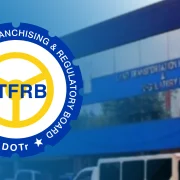DepEd pegs disaster-related damage to schools at P29.5B

ILOILO CITY—Natural disasters from June to October this year have left more than 10,700 schools damaged and disrupted classes for over 1.1 million learners across the country, according to the Department of Education (DepEd).
The total estimated losses to school properties reached P29.5 billion, following the combined effects of earthquakes, typhoons and other calamities that hit 18 regions, 78 provinces and 809 cities and municipalities from June 16 to Oct. 22, the DepEd Disaster Risk Reduction and Management Service (DRRMS) said in a report.
At least 7,920 schools sustained structural damage, with Region 7 (Central Visayas) reporting the highest number of affected schools at 1,709, followed by the Cordillera Administrative Region (1,307) and Region 11 or Davao region (1,011).
The report noted 31,622 classrooms with minor damage, 8,905 with major damage and 9,405 totally destroyed classrooms. The estimated reconstruction cost was pegged at P60,000 for minor, P600,000 for major, and P1.4 million for totally damaged classrooms.
Earthquakes, which struck Cebu and Davao areas with devastating effects between late September and early October, accounted for 58.8 percent of the disasters reported, while hydrometeorological events such as floods, landslides and typhoons made up 40.9 percent. Fire incidents constituted 0.3 percent.
In total, 2,520 water, sanitation and hygiene facilities and 314,863 learning materials were damaged, along with 12,442 pieces of school equipment, the report said.
Impact
The DRRMS said 1,148,847 learners and 69,827 teachers and staff were affected by the disasters. Of these, 2,908 learners and 376 personnel were reported injured.
As classes were suspended in nearly 90 percent of affected schools, DepEd shifted to alternative learning delivery modes.
About 10,448 schools used modular distance learning, 4,319 implemented blended learning, 522 adopted flexible learning options and 414 continued via online distance learning.
Despite widespread disruptions, 10.5 percent of schools managed to continue onsite classes without suspension.
DepEd said it continues to coordinate with the Department of Public Works and Highways, local government units and other agencies to fast-track school repairs and build disaster-resilient facilities.
The DRRMS emphasized that the frequency and intensity of disasters underscore the need for sustained investment in climate adaptation, early warning systems and infrastructure retrofitting to ensure that learning continues despite crises.

















